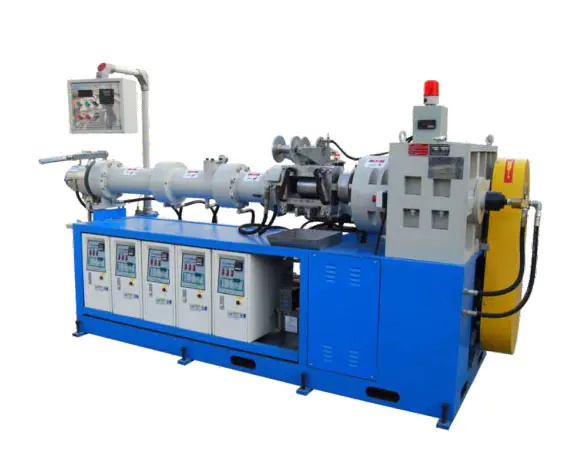What Are the Efficiency and Limitations of a Rubber Extruder Machine?
Efficiency of a Rubber Extruder Machine

One of the key advantages of a rubber extruder machine lies in its production efficiency. The process of extrusion allows for a continuous and automated operation, which reduces manual labor and shortens production time. Compared to traditional molding methods, extrusion provides a more consistent output, which is ideal for large-scale manufacturing. By maintaining steady temperature and pressure conditions, the rubber extruder machine ensures uniform material flow, reduce defects and waste.
Another factor contributing to its efficiency is the ability to control various processing parameters. Operators can adjust the speed of the screw, the temperature of different zones, and the die pressure according to the type of rubber compound used. This level of control makes the rubber extruder machine suitable for producing a wide range of products, from simple tubing to complex profiles. As a result, it supports flexible production lines that can quickly adapt to different product requirements without significant downtime.
Energy efficiency is also a notable characteristic of the rubber extruder machine. Modern designs often include energy-saving features such as improved screw geometry, advanced temperature control systems, and optimized motor performance. These features help lower operational costs and reduce energy consumption, which is increasingly important for manufacturers focused on sustainable production practices. The continuous operation of the rubber extruder machine also helps maintain a steady workflow, reducing interruptions that could otherwise waste energy and material.
Additionally, the rubber extruder machine enhances product quality through its precise control of material mixing and shaping. Consistent extrusion ensures smooth surfaces, uniform density, and accurate dimensions in the final product. This consistency contributes to reduced rejection rates and higher overall productivity. In industries where precision and reliability are crucial, such as automotive or medical manufacturing, the efficiency of the rubber extruder machine can be a significant advantage.
Limitations of a Rubber Extruder Machine
Despite its many strengths, the rubber extruder machine is not without limitations. One of the main challenges is the need for precise temperature control. Rubber materials are sensitive to heat, and even slight deviations can affect the extrusion quality. Overheating may cause the material to degrade, while insufficient heating can poor flow and uneven surfaces. Maintaining the correct temperature throughout the process requires careful monitoring and skilled operation, which can increase maintenance and training costs.
Another limitation of the rubber extruder machine is its dependence on material characteristics. Different rubber compounds behave differently under pressure and heat, meaning that not all formulations are suitable for extrusion. For instance, compounds with high viscosity or irregular mixing properties may cause blockages or inconsistent output. This restricts the range of materials that can be efficiently processed, making it necessary for manufacturers to test and adjust formulations before large-scale production.
Furthermore, the initial investment cost of a rubber extruder machine can be relatively high. Advanced models with automated control systems, energy-efficient motors, and specialized dies require significant capital expenditure. While these costs may be offset over time through improved productivity, they can still pose a challenge for smaller manufacturers. Regular maintenance, including cleaning, calibration, and replacement of worn parts, also adds to the total operational cost.
In addition, the rubber extruder machine may have limitations in producing complex shapes or products that require multiple material layers. While extrusion is ideal for continuous profiles, it may not be suitable for intricate designs that demand high precision in all directions. In such cases, alternative processes like injection molding might be more appropriate, even though they are less efficient for continuous production.






 English
English 中文简体
中文简体 русский
русский



